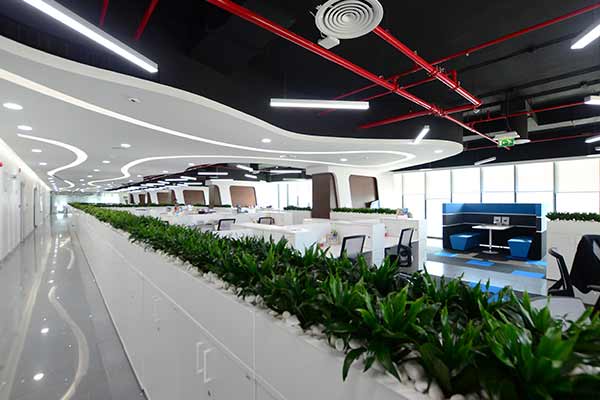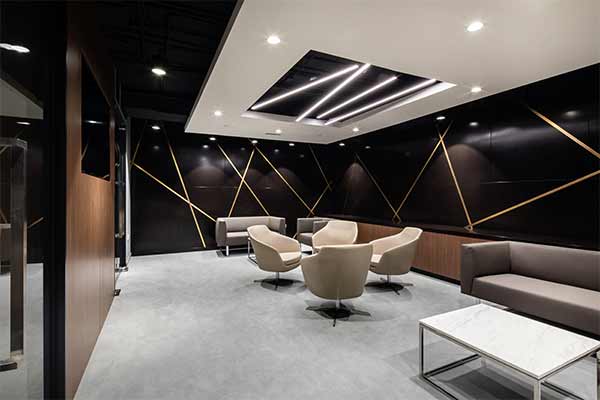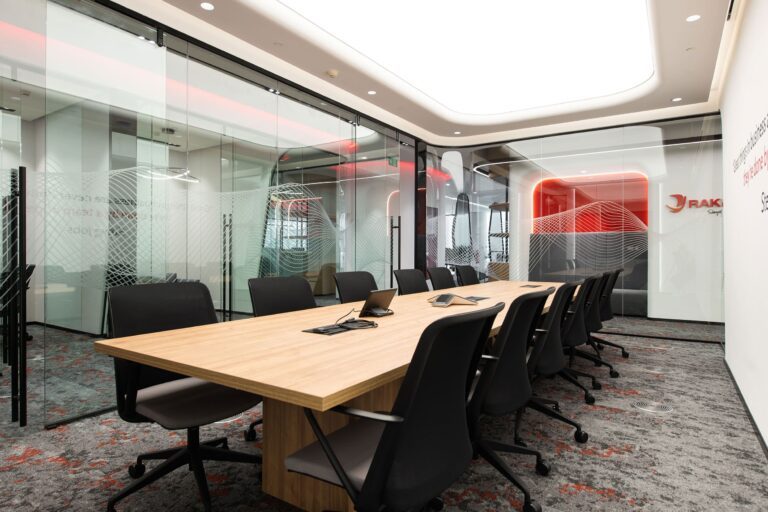5 Interior Designing Trends that Will Reinvent Your Office Workspace: Forecast 2024!

Office environments have undergone remarkable transformations, shifting from dull, unstimulating spaces that employees were eager to exit to vibrant, nature-inspired, and adaptable workspaces, marking a significant change even within the last five years. As 2024 approaches, design interior office trends continue to soar to new levels, reflecting businesses’ embrace of innovative approaches to foster comfortable and inspiring work settings amid the evolving workplace landscape. We’ve compiled a list of the leading office design trends anticipated to gain momentum in 2024.
2024’s Prime Office Design Trends
Remote work experience has underscored the significance of comfort, tranquillity, and rejuvenating environments for productive work. Those returning to office settings now anticipate employers to craft such workspaces, revamping traditional layouts and design elements through fit-outs or refurbishments.
Our forecasted office design trends promise to revolutionize 2024’s work environments.
1) Foster mobility
Encouraging movement prevents ‘nesting’, where staff stay in one office area, fostering isolation. Facilitating office space use boost’s chance interactions. Strategic team placement encourages cross-disciplinary engagement, curbing isolation. Shifting people from usual spots enhances focus, productivity, and collaboration, making office time purposeful and interactions impactful.
2) Provide a retreat space
A rising trend, “feel-good” office design recognizes its impact on employee morale and burnout. Modern designs prioritize self-care and mental well-being, featuring fitness centres, daycare, game rooms, versatile dining areas, and relaxation spaces. These innovations foster self-care, colleague connections, and more enjoyable work experience.
3) Integrating resimercial and hotelification concepts
Influenced by experiences, terms like ‘resimercial’ and ‘hotelification’ blend residential and hospitality elements into workplace design. It’s not about replicating home but evoking
emotions of comfort and novelty. From natural light to personalized controls, fostering a personal office experience improves thinking, comfort, and working dynamics, enhancing overall performance.
4) Tech-driven evolution
Smart workplaces fuse tech and design, leveraging data for accessibility. Sensors regulate air quality and space, shaping adaptable environments. Innovative lighting systems enhance focus. Changes like desk booking tech influence layouts, prioritizing flexibility and comfort for productive, secure workspaces.
5) Remote first approach
Prioritizing remote-first design isn’t solely about endorsing WFH; it’s acknowledging remote communication’s permanence post-pandemic. Designing with remote priority transforms offices, ensuring inclusivity for those not physically present. Balancing in-office and remote dynamics fosters inclusion; minor tweaks, like d-shaped tables, notably elevate remote participation, fostering a sense of belonging. A workspace geared toward the remote-first approach facilitates seamless conversations, overcoming barriers posed by inadequate meeting spaces or technology.
In 2024, expect increased investment in design interior office quality, directly impacting work experience. Demand for ‘super prime’ spaces rises, emphasizing elevated experiences tailored to individual needs. Flexibility remains vital as businesses refine strategies amidst ongoing discussions on evolving work models.




